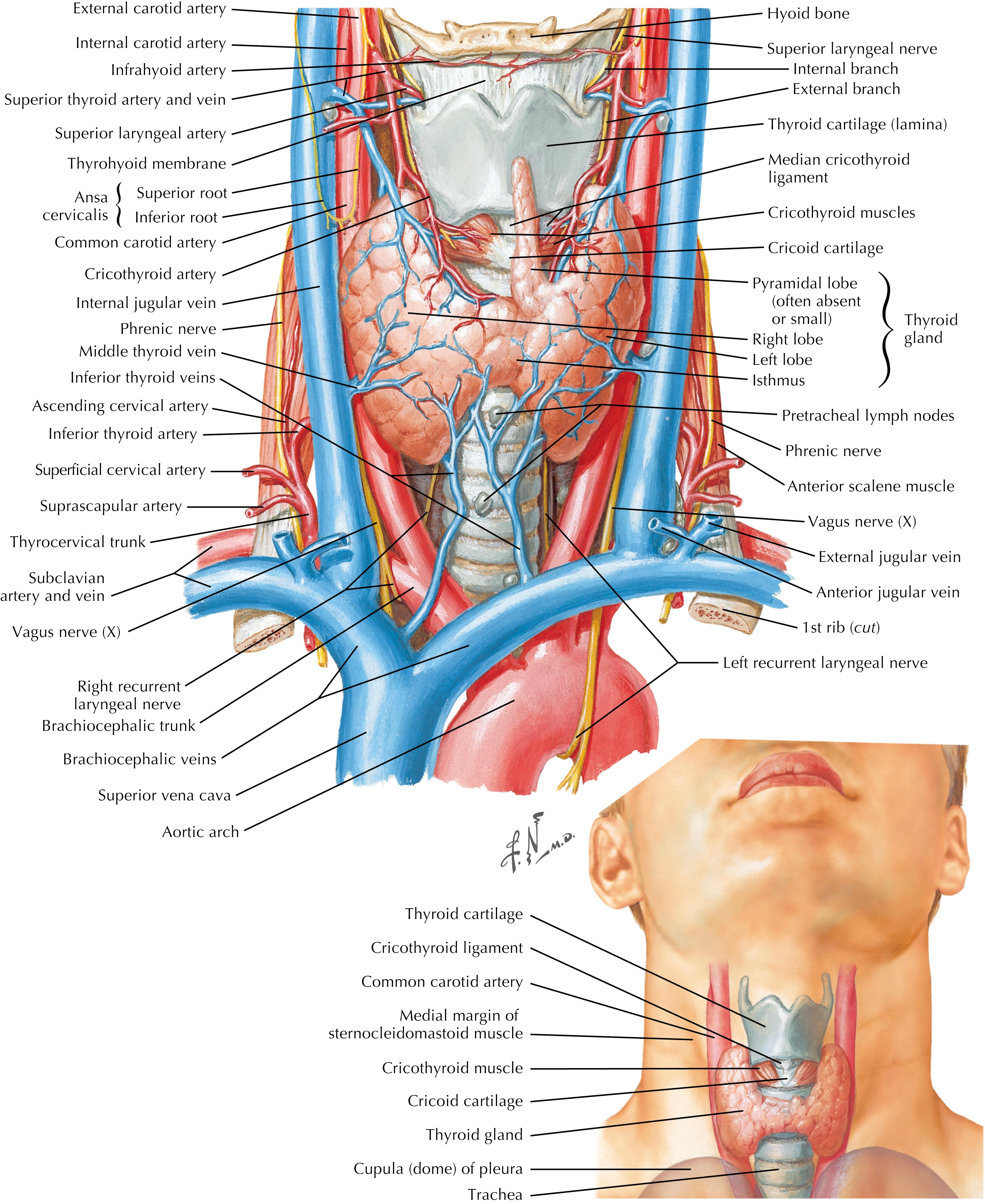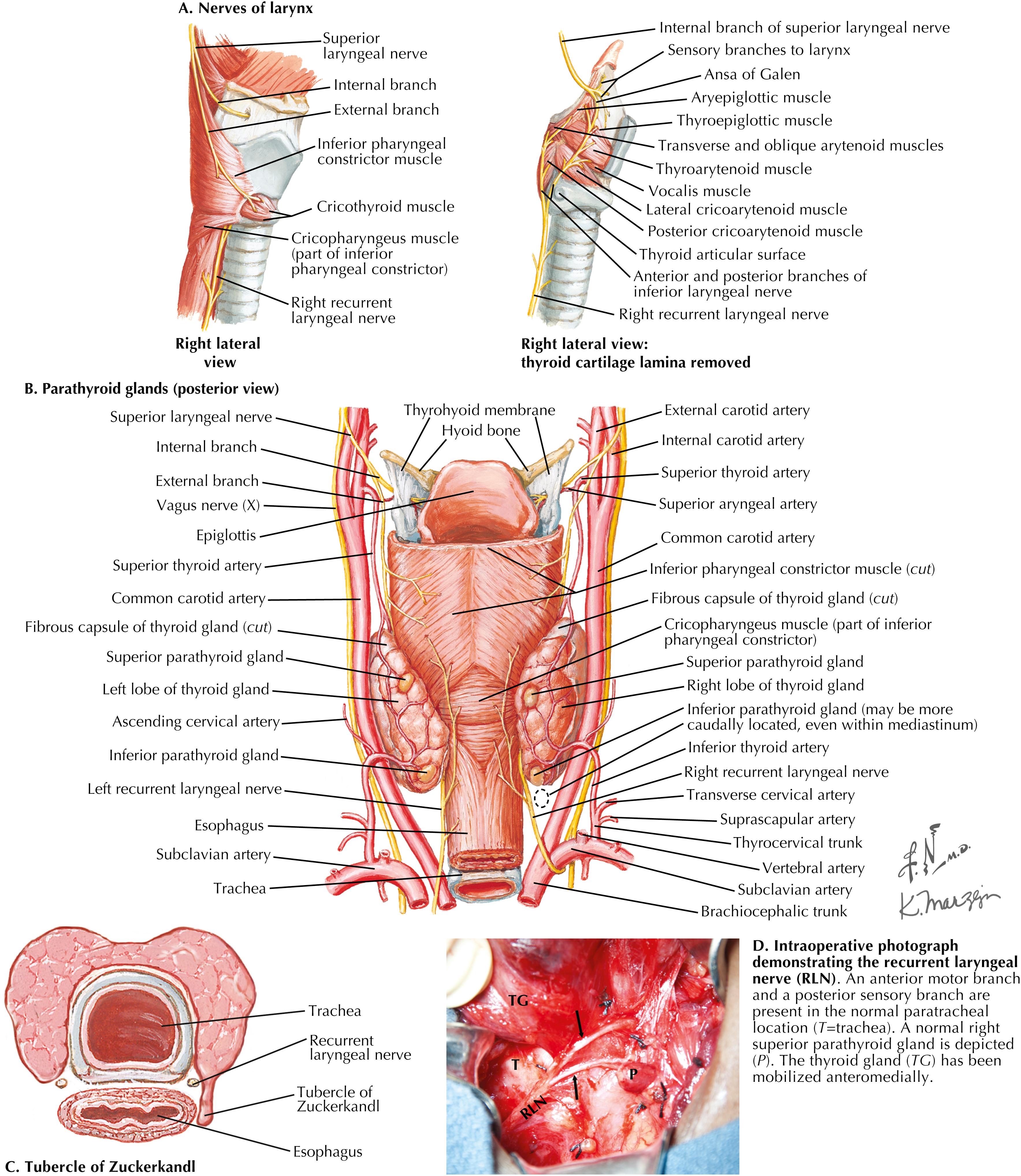Physical Address
304 North Cardinal St.
Dorchester Center, MA 02124
Thyroidectomy is the most common endocrine surgical procedure. By definition, a total thyroidectomy requires the resection of both thyroid lobes and isthmus, whereas a thyroid lobectomy requires the resection of one lobe with the isthmus up to the contralateral lobe. Indications for thyroidectomy include benign causes such as mass effect of nodule(s) (on the aerodigestive tract, recurrent laryngeal nerve [RLN], major vessels), thyrotoxicosis (Graves disease refractory to medical therapy, Graves disease in the context of thyroid nodules, toxic nodular goiter), as well as malignancy or suspected malignancy on cytology from fine-needle aspirations.
Although thyroidectomy is a safe procedure in experienced hands of a high-volume endocrine surgeon, it carries inherent rare but serious risks: cervical hematoma, hypocalcemia, and RLN injury. Preoperative evaluation should include thyroid-stimulating hormone (TSH), comprehensive central and lateral neck ultrasonography to rule out metastatic disease, and, in selected patients, voice examination by laryngoscopy.
The thyroid is a bilobed gland wrapped anteriorly to the trachea and joined by an isthmus. The pyramidal lobe, which represents the embryologic remnant of the thyroglossal duct, can be found on the left side of the isthmus in up to 60% of patients. The thyroid is attached posteriorly to the trachea by the suspensory ligament of Berry. Each thyroid lobe is supplied by the superior and inferior thyroid arteries arising from the carotid artery and thyrocervical trunk, respectively. Each hemithyroid is drained by the superior, middle, and inferior thyroid veins. The upper and middle veins empty in the internal jugular, whereas the inferior thyroid vein drains into the brachiocephalic vein ( Fig. 3.1 ).

In the upper neck, the superior laryngeal nerve (SLN) branches off the vagus nerve. Two to three centimeters cephalad to the superior pole vessels, the SLN divides into an internal and external branch. The internal branch provides sensation to the supraglottic area of the larynx as well as the base of the tongue, whereas the external branch provides motor innervation to the cricothyroid muscle.
The external branch of the SLN (EBSLN) crosses the superior pole vessels 1 cm or more cephalad to the thyroid parenchyma, travels medially to the superior pole vessel, and provides motor innervation to the cricothyroid muscle. On rare occasion, the EBSLN crosses the superior pole vessels at the junction with the thyroid parenchyma junction, therefore increasing the likelihood of injury and emphasizing the importance of ligating individual vessels as close as possible to the thyroid capsule (see Fig. 3.2 ).

Become a Clinical Tree membership for Full access and enjoy Unlimited articles
If you are a member. Log in here